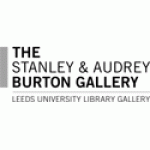How you can use this image
This image can be used for non-commercial research or private study purposes, and other UK exceptions to copyright permitted to users based in the United Kingdom under the Copyright, Designs and Patents Act 1988, as amended and revised. Any other type of use will need to be cleared with the rights holder(s).
Review the copyright credit lines that are located underneath the image, as these indicate who manages the copyright (©) within the artwork, and the photographic rights within the image.
The collection that owns the artwork may have more information on their own website about permitted uses and image licensing options.
Review our guidance pages which explain how you can reuse images, how to credit an image and how to find images in the public domain or with a Creative Commons licence available.
Notes
Add or edit a note on this artwork that only you can see. You can find notes again by going to the ‘Notes’ section of your account.
Born in Zürich, Fuseli trained as a priest, but never practiced, despite taking holy orders in 1761. He came to London in 1765 and was encouraged to paint by Reynolds. He studied in Rome before settling once more in England, where he established a reputation for producing ‘highly imaginative works that combine “Gothic” sublimity with over-excited sexuality’ (Hughes, University of Leeds 1985, no.11). This coupling permeates most of his work, and adds disturbing overtones to the literary subjects that formed the major part of his oeuvre. Fuseli made a large number of paintings of Shakespearian subjects, and contributed to John Boydell’s Shakespeare Gallery. It is possible that the picture was once in the collection of the actress Harriet Mellon (1777?–1837), known to have played the part of Mistress Page, and who in 1815 married Thomas Coutts, a friend of Fuseli's and a founder of Coutts Bank.
Title
Mistress Page in 'The Merry Wives of Windsor' by William Shakespeare
Date
c.1790–1795
Medium
oil on canvas
Measurements
H 75.9 x W 63.2 cm
Accession number
LEEUA1923.30
Acquisition method
donated by Sir Michael Ernest Sadler, 1923
Work type
Painting

